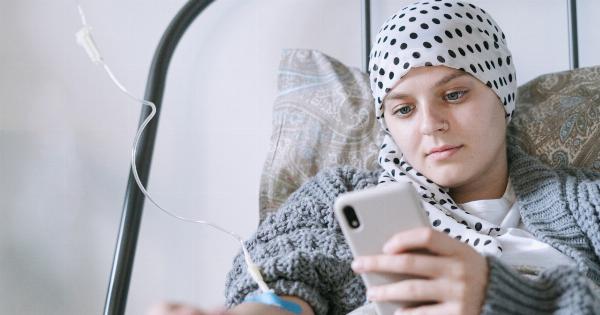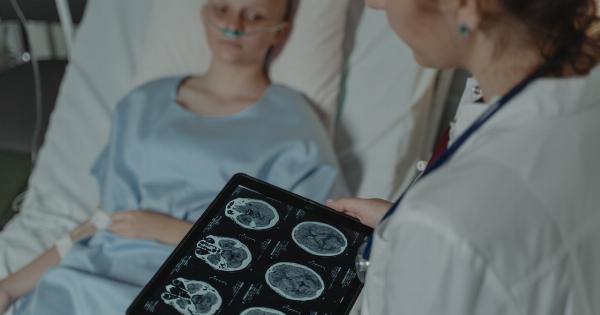Lung cancer is one of the leading causes of cancer-related deaths worldwide, with a low survival rate. The treatment of operable lung cancer primarily consists of surgery, chemotherapy, and radiation therapy.
However, the use of neoadjuvant immunotherapy in combination with chemotherapy has emerged as a promising approach to improve treatment outcomes and long-term survival for patients with operable lung cancer.
Understanding Neoadjuvant Immunotherapy
Neoadjuvant immunotherapy involves the administration of immune checkpoint inhibitors before surgical removal of the tumor. These inhibitors target specific proteins on immune cells and cancer cells, which regulate the immune response.
By blocking these proteins, immune checkpoint inhibitors enhance the body’s immune response against cancer cells.
Benefits of Neoadjuvant Immunotherapy
Combining neoadjuvant immunotherapy with chemotherapy has shown several benefits in the treatment of operable lung cancer:.
- Increase in treatment response: Neoadjuvant immunotherapy enhances the body’s immune response to cancer cells, increasing the effectiveness of chemotherapy.
- Tumor downstaging: Preoperative immunotherapy can lead to a reduction in tumor size, making the surgical removal of the tumor easier.
- Improved surgical outcomes: Neoadjuvant immunotherapy helps in achieving complete tumor resection with negative surgical margins, reducing the risk of cancer recurrence.
- Potential for systemic control: The combination of immunotherapy and chemotherapy may target not only the primary tumor but also any micrometastases, reducing the risk of distant metastasis.
- Enhancement of long-term survival: Studies have shown that the use of neoadjuvant immunotherapy in combination with chemotherapy improves overall survival rates for patients with operable lung cancer.
Optimal Treatment Sequence
When considering neoadjuvant immunotherapy in combination with chemotherapy for operable lung cancer, the treatment sequence is crucial. It is generally recommended to administer immunotherapy first, followed by chemotherapy.
This sequence allows immunotherapy to stimulate the immune system and prime it for an enhanced response during chemotherapy.
Evidence from Clinical Trials
Several clinical trials have evaluated the efficacy and safety of neoadjuvant immunotherapy in combination with chemotherapy for operable lung cancer. These trials have shown promising results:.
- KEYNOTE-021: This trial evaluated the combination of pembrolizumab (an immune checkpoint inhibitor) with chemotherapy in patients with operable non-small cell lung cancer (NSCLC). The results showed a significantly higher rate of pathological complete response in the combination group compared to chemotherapy alone.
- NEOSTAR: NEOSTAR investigated the use of nivolumab (an immune checkpoint inhibitor) in combination with chemotherapy in patients with resectable NSCLC. The study demonstrated increased major pathological response rates and downstaging of tumors in the combination group.
- LCMC3: This trial assessed the efficacy and safety of durvalumab (an immune checkpoint inhibitor) added to neoadjuvant chemotherapy in patients with resectable NSCLC. The combination showed improved major pathological response rates and increased complete resection rates.
Challenges and Considerations
While neoadjuvant immunotherapy in combination with chemotherapy shows promise, there are several challenges and considerations to be aware of:.
- Optimal patient selection: Not all patients with operable lung cancer may benefit from neoadjuvant immunotherapy in combination with chemotherapy. Identifying the right candidates based on tumor characteristics and biomarkers is essential.
- Adverse effects: Immune-related adverse effects can occur with the use of immune checkpoint inhibitors. Therefore, close monitoring and management of side effects are crucial during treatment.
- Resistance mechanisms: Cancer cells may develop resistance to immune checkpoint inhibitors over time. Further research is needed to understand and overcome these resistance mechanisms.
Future Directions
The combination of neoadjuvant immunotherapy with chemotherapy holds immense potential in improving treatment outcomes for operable lung cancer. Ongoing research is focused on:.
- Identifying predictive biomarkers: Biomarkers play a crucial role in patient selection for neoadjuvant immunotherapy. Identifying reliable predictive biomarkers will help determine which patients are likely to benefit the most from this approach.
- Developing novel targeted therapies: Combination therapies involving immune checkpoint inhibitors and targeted therapies are being explored to overcome resistance mechanisms and improve treatment efficacy.
- Exploring immunotherapy combinations: Investigating the use of multiple immune checkpoint inhibitors or combining immunotherapy with other immunomodulatory agents may further enhance treatment response.
Conclusion
Neoadjuvant immunotherapy in combination with chemotherapy presents a promising approach for the treatment of operable lung cancer.
The synergistic effects of immunotherapy and chemotherapy result in improved treatment response, tumor downstaging, and enhanced long-term survival. Ongoing research and clinical trials will further refine and optimize this treatment strategy, offering hope to patients with operable lung cancer.




























